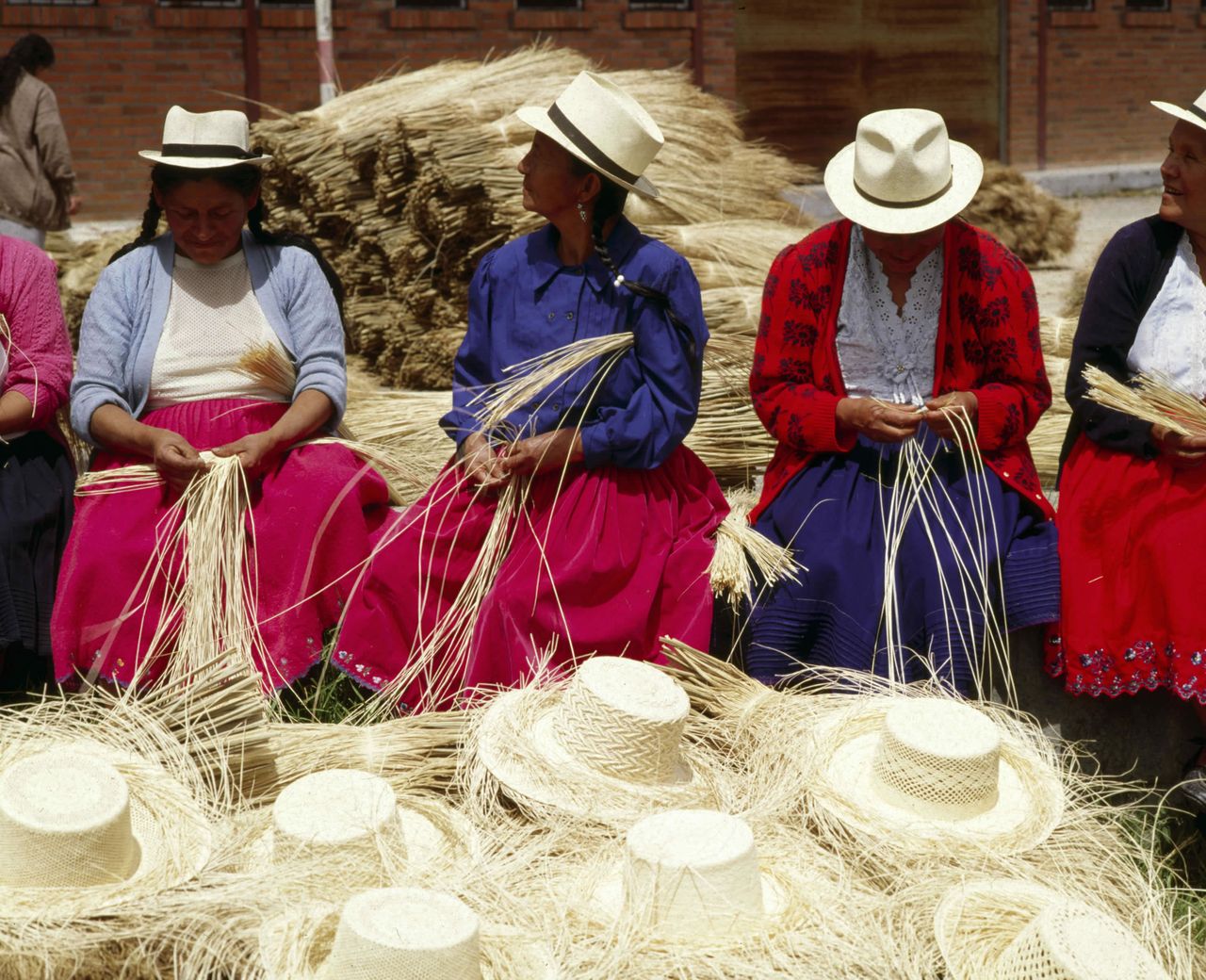Authentic markets in Ecuador
Mèèèèh sounds behind me. When I turn around, I don't see where the bleating is coming from at first, but soon I discover three sheep's heads sticking out above the roof of a local bus. A long wooden gangway is placed at an angle against the bus. One by one the sheeps, which were initially tied up by the legs, are led out of the bus.

The hustle and bustle of the market
It is six o'clock in the morning, still dark and freezing cold in this remote place high in the Andes. Yet I was anxious to be here at this hour. This is the time when Indian market vendors, livestock farmers, vegetable and fruit growers arrive to set up their stalls and sell their wares. Traveling by local transport from the mountain villages nearby, sometimes for hours on unpaved and bumpy roads. They have been doing this for centuries.

The hustle and bustle of setting up the stalls, the funny scenes, the first rays of sunlight casting a warm glow over the Andean mountainsides: this moment is magical! A feast for the eyes and the camera: pick-up trucks arrive, bulging with women dressed in pink-colored ponchos, dark blue and white shawls and distinctive black hats. Huge sacks of potatoes balance on the back of far too small motorcycles, their rider almost swinging into the air. At the food stalls, an entire pig is roasted and presented on a large platter. In all its glory, head and all. Pieces of meat are cut from its back and side, fried and offered as hot meat sandwiches. I have fortunately already finished my breakfast, although it smells good.
Goats and guinea pigs
At 7 o'clock it is light and by now every market merchant has set up his or her stall. I decide to walk around a bit. On the side of the market square is the section for livestock. Not only sheep and llamas are traded, I also see goats, cows, chickens and...guinea pigs, these are bred here as a delicacy. Noisy, screaming pigs trot in front of a little fellow. As if they were dogs being walked, they are leashed by a bundle of strings from his reddened hand. He has to run along to avoid being pulled over. Near the chickens stands an old Indian female. Deep wrinkles, cracked lips, and red veins in her already red cheeks mark the hard life in this remote region. She wears an ochre-colored poncho, with a dark blue skirt and a brown sombrero. The color of the clothing tells you which village you're from, so I'm told, and indeed I notice similarities and differences in people's costumes.



Quiere comprar?
I leave the animals and make my way to the most colorful part of the market. Fruit and vegetable vendors neatly spread out their rugs on long tables, crates, or the ground. As wonderful as it is interesting is the variety of products, some completely unknown to me, but also many recognizable. Huge baskets and bags of grains, quinoa seeds, large, small, green, white, and brown beans. Bananas, apples and tangerines are piled up in artful pyramids, the eye wants something too. Corn also comes in different shapes. The kind grown here has large, somewhat dry grains. "Para hacer chicha", says the saleswoman, to make a sweet corn juice. Most impressive, though, are the potatoes: large, no, colossal potatoes, round, crescent-shaped, yellow, brown, black, uniformly smooth to gnarled and shriveled. Never did I see such a variety.
On the way back to the car, I pause for a moment in front of the animals. A rancher strolls by, followed by a group of nervous leashed llamas, three adults and one young, "Quiere comprar uno?" (Would you like to buy one?), he asks, smiling his long unbrushed teeth. No, I'm not taking home a llama, but I am taking home unforgettable memories.

More about Ecuador
Would you like to make a trip through Ecuador and are you curious about the possibilities? Then take a look at our page about Ecuador. Do you have any questions? Please do not hesitate to contact us. Send an e-mail to info@sapapanatravel.nl or call us at +31 73 610 62 04. We'll be happy to help.